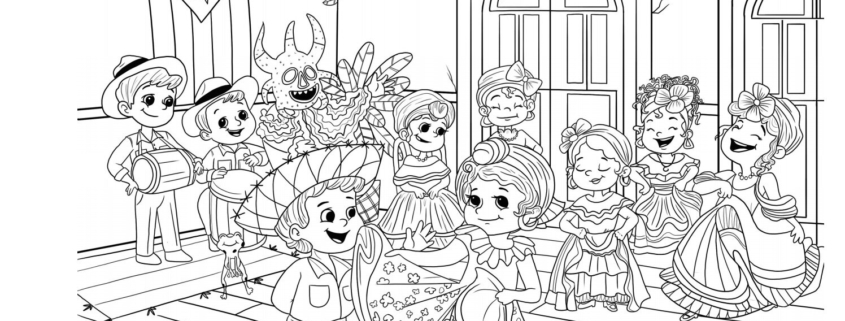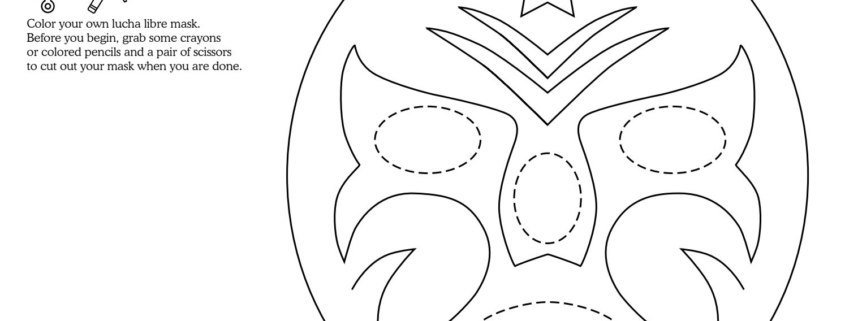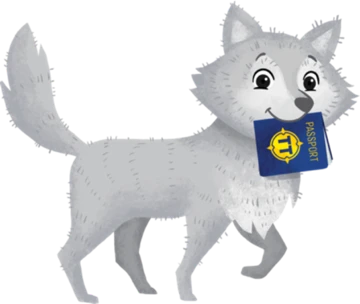The vejigante, pronounced ve-hee-GAN-teh is a character that represents an enemy or monster and can be seen in Puerto Rico during festivals such as Carnaval, Fiestas de Santiago Apóstol (in honor of St. James ), and other days of celebrations. The vejigante mask is known as the careta and it is usually made using papier-mâché or coconut husks and sometimes gourds. The legend of the vejigante comes from the Spanish settlers that brought over this symbol from Spain.
The Loíza vejigante masks are some of the most recognizable examples in Puerto Rican folk art. This style became popular by the late Don Castor Ayala over 60 years ago! Today, the Ayala family still makes these masks out of coconut and bamboo from their home in Loíza, in the northeast coast of Puerto Rico!
In today’s lesson, you can color your own vejigante mask also known as a careta.
Even though the masks represent a villian type of character, they are still used in playful ways and shown in bright colors throughout celebrations. Can you bring your vejigante to life using bright, fun, and playful colors?








